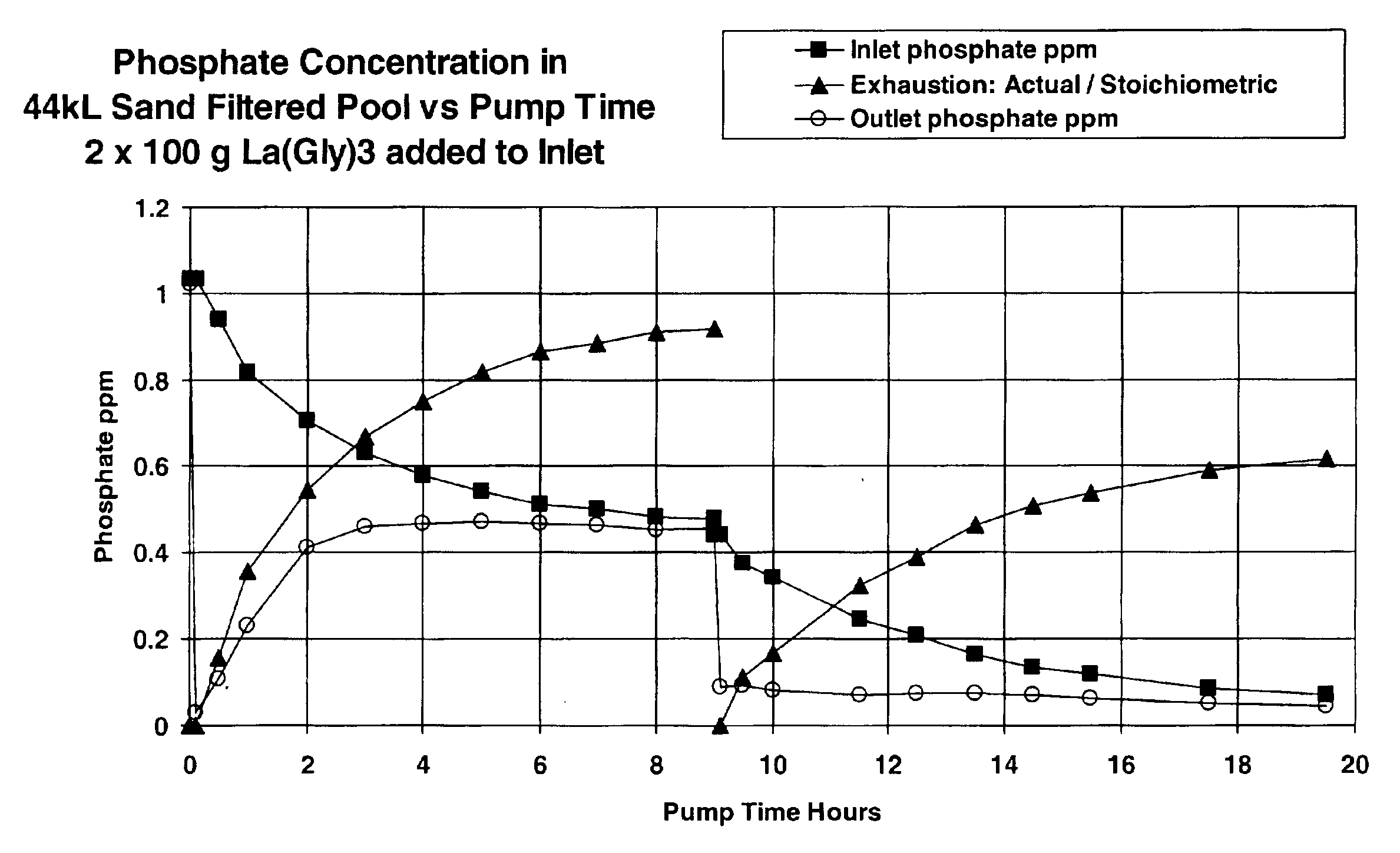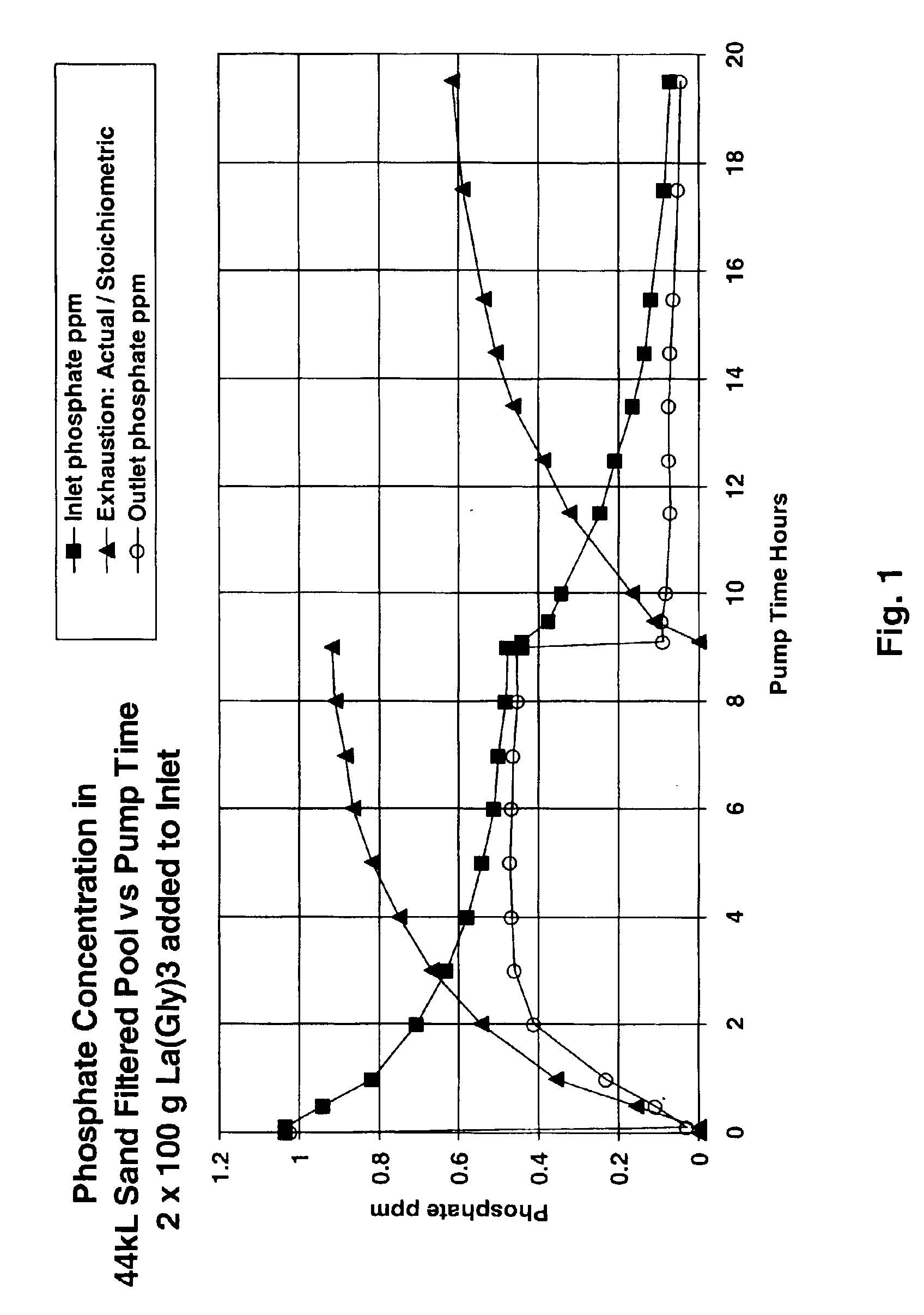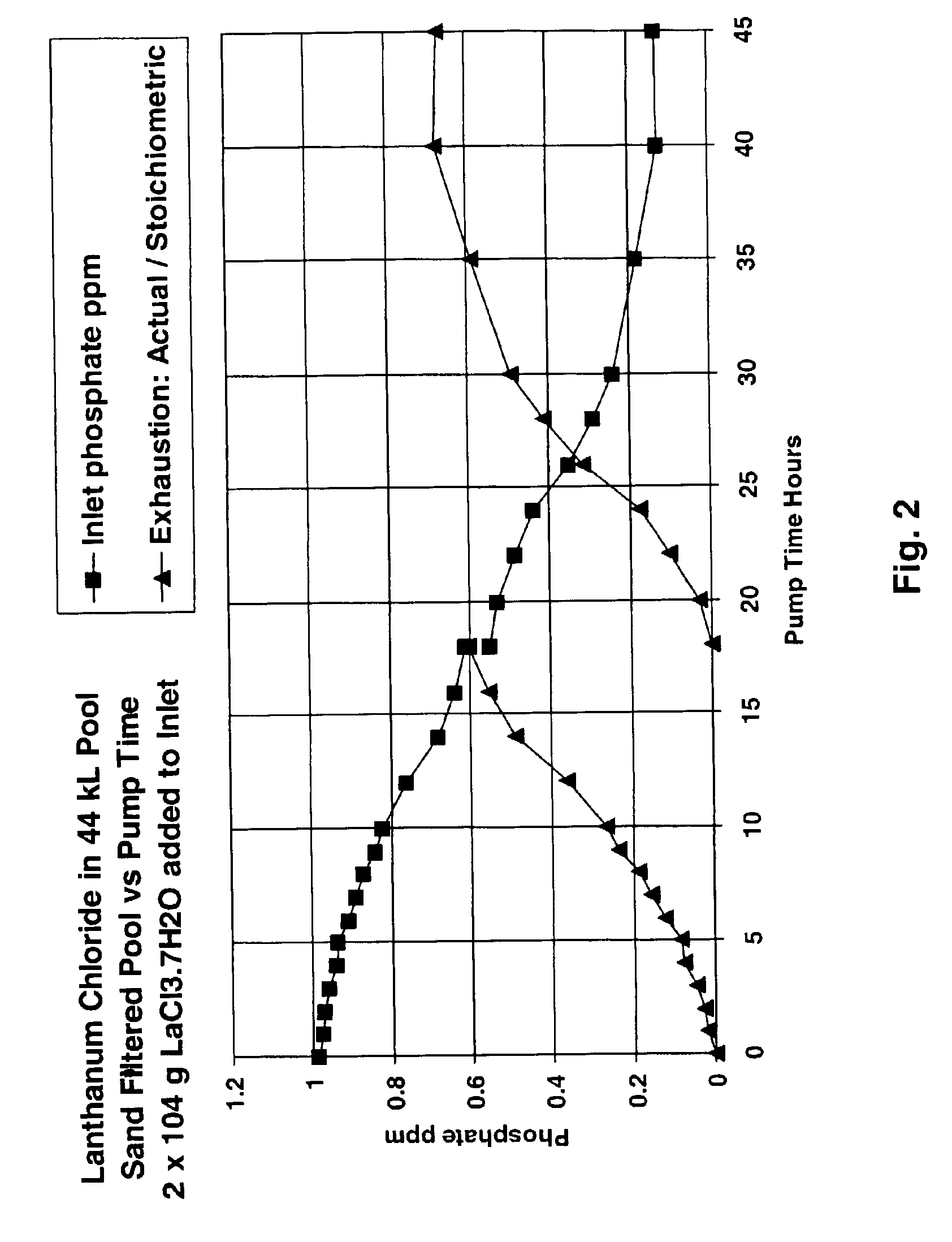Removal of phosphate from water
a technology of phosphate and water, applied in the nature of treatment water, separation process, filtration treatment, etc., can solve the problems of inability to meet the requirements of water quality control, etc., to achieve low cost, wide commercial availability, and low solubility
- Summary
- Abstract
- Description
- Claims
- Application Information
AI Technical Summary
Benefits of technology
Problems solved by technology
Method used
Image
Examples
example 1
Preparation of Lanthanum Glycolate
Particulate lanthanum glycolate was made by several different methods. In one method, 102 grams of lanthanum chloride hepta-hydrate granules were dissolved in 90 ml of commercial grade 70% weight / volume glycolic acid of density 1.244 g / l at 15° C. for 8 hours with gentle stirring for a yield after of 70 grams of lanthanum glycolate with a particle size range of 10 to 50 microns. In another method, 90 ml of 70% glycolic acid was reacted with 39 grams of sodium hydroxide to increase the pH from around 2.1 to 7.0. This was gently mixed at 20° C. for 8 hours with 200 ml or 50% weight / volume lanthanum chloride hepta-hydrate for a yield of 88 grams of lanthanum glycolate with a particle size range of about 15 to 40 microns. In other methods the solutions of the previous methods were heated to 80° C. before mixing and the combined solution was gently stirred for 30 minutes for a yield of 94 grams of lanthanum glycolate with a particle size range of 5 to 30...
example 2
Use of Lanthanum Glycolate
A swimming pool fitted with a sand filter (0.2 m2 cross section area and 0.6 m sand depth) and 0.75 kW electric centrifugal pump delivering 4 l / s at a pressure of 72 kPa was filled with 40 kl of fresh tap water (pH 7.8 alkalinity, 50 ppb phosphate, 80 ppm CaCO3 equivalent and 120 ppm calcium hardness equivalent) and chlorinated to 3 ppm with “tri-chlor” sticks in the skimmer. A solution containing about 18.5 g phosphate was made by dissolving 26.5 g potassium dihydrogen phosphate in 200 ml of hot water. The filter system was set to recirculate (water passing from the pool through the skimmer and pump and back into the pool without passing through the filter). The pump was switched on and the phosphate solution was dripped into the skimmer over 30 minutes. After a further 1 hour phosphate analysis using the molybdenum blue stannous chloride method gave a phosphate concentration as 510 ppb. The pump was switched off, the filter system was switched to filter a...
example 3
Preparation and Use of Lanthanum Lactate
Particulate lanthanum lactate (simplified formula La(C3H5O3)3) was made by dissolving 90 grams of 80% lactic acid powder in 200 ml of water at 80° C. and neutralising the solution with fine solid sodium hydroxide then mixing the solution with another solution formed by dissolving 102 g lanthanum chloride hepta-hydrate granules dissolved in 200 ml water at 80° C. The combined solution was gently stirred for 30 minutes for a yield of 106 g lanthanum lactate with a particle size range of 10 to 40 microns. Again the resultant suspension was found to be highly reactive to dissolved phosphate in chlorinated pool water and to be retained satisfactorily by pool filters.
After vacuuming the pool and backwashing the filter, the previous example was repeated except that 100 grams of lanthanum lactate were substituted for the lanthanum glycolate. Essentially results identical to the previous example were obtained.
PUM
| Property | Measurement | Unit |
|---|---|---|
| size | aaaaa | aaaaa |
| size | aaaaa | aaaaa |
| particle size | aaaaa | aaaaa |
Abstract
Description
Claims
Application Information
 Login to View More
Login to View More - R&D
- Intellectual Property
- Life Sciences
- Materials
- Tech Scout
- Unparalleled Data Quality
- Higher Quality Content
- 60% Fewer Hallucinations
Browse by: Latest US Patents, China's latest patents, Technical Efficacy Thesaurus, Application Domain, Technology Topic, Popular Technical Reports.
© 2025 PatSnap. All rights reserved.Legal|Privacy policy|Modern Slavery Act Transparency Statement|Sitemap|About US| Contact US: help@patsnap.com



